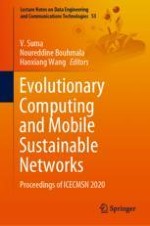2021 | OriginalPaper | Chapter
Homo Sapiens Diabetes Mellitus Detection and Classification
Authors : Anu Agarwal, Anjay Sahoo, Indrashis Das, Siddharth S. Rautaray, Manjusha Pandey
Published in: Evolutionary Computing and Mobile Sustainable Networks
Publisher: Springer Singapore
Activate our intelligent search to find suitable subject content or patents.
Select sections of text to find matching patents with Artificial Intelligence. powered by
Select sections of text to find additional relevant content using AI-assisted search. powered by
